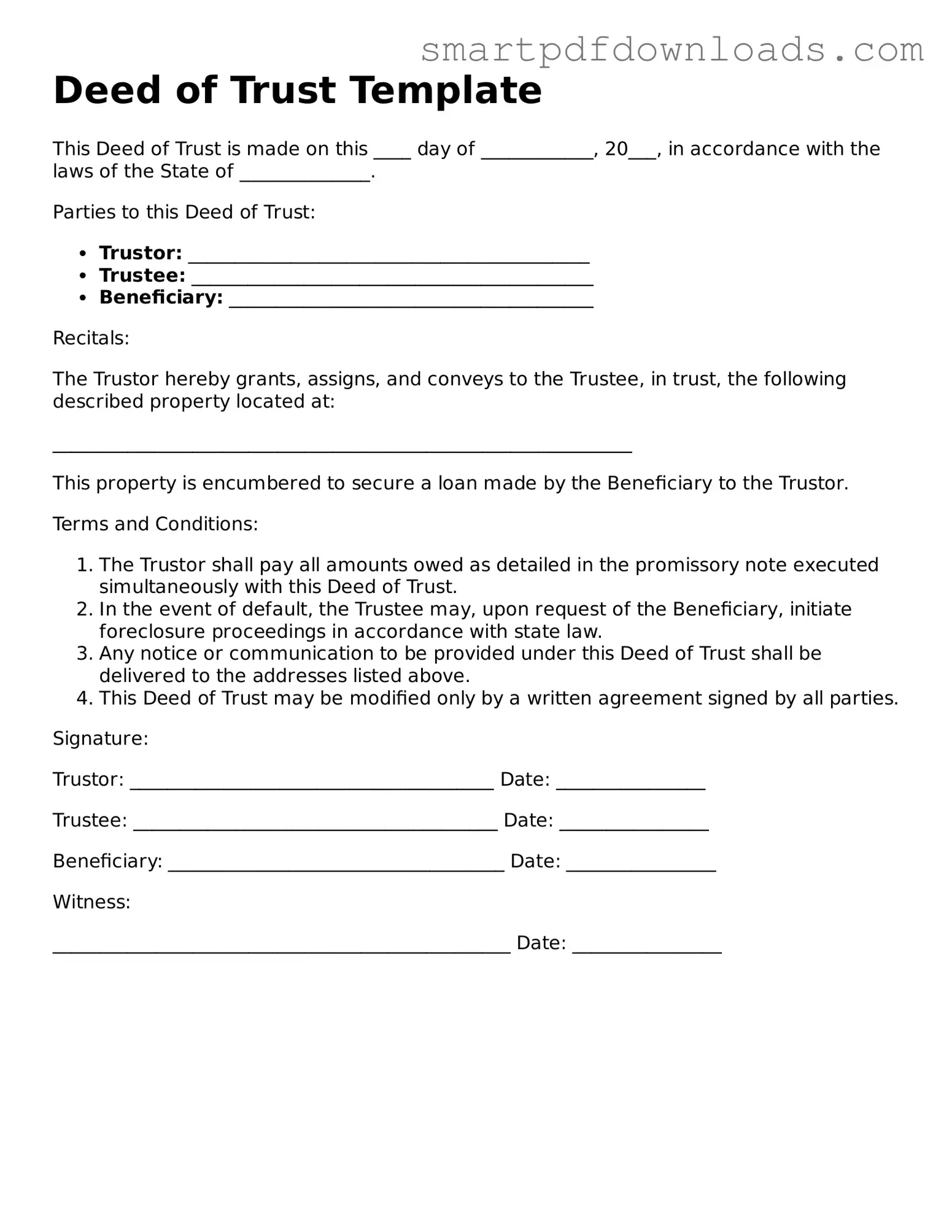Deed of Trust Template
This Deed of Trust is made on this ____ day of ____________, 20___, in accordance with the laws of the State of ______________.
Parties to this Deed of Trust:
- Trustor: ___________________________________________
- Trustee: ___________________________________________
- Beneficiary: _______________________________________
Recitals:
The Trustor hereby grants, assigns, and conveys to the Trustee, in trust,
the following described property located at:
______________________________________________________________
This property is encumbered to secure a loan made by the Beneficiary to the Trustor.
Terms and Conditions:
- The Trustor shall pay all amounts owed as detailed in the promissory note executed simultaneously with this Deed of Trust.
- In the event of default, the Trustee may, upon request of the Beneficiary, initiate foreclosure proceedings in accordance with state law.
- Any notice or communication to be provided under this Deed of Trust shall be delivered to the addresses listed above.
- This Deed of Trust may be modified only by a written agreement signed by all parties.
Signature:
Trustor: _______________________________________ Date: ________________
Trustee: _______________________________________ Date: ________________
Beneficiary: ____________________________________ Date: ________________
Witness:
_________________________________________________ Date: ________________
